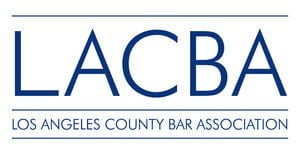In 1982, the California legislature recognized that “dependent adults” — including senior citizens — are less able to protect themselves against criminal misconduct and, therefore, should receive special legal protections.

California Penal Code 368 was enacted in 1983 to specifically address the concerns and complaints of dependent adults subject to abuse and/or neglect. This statute is similar in wording and spirit to child abuse statutes. Elder abuse under California law is a wobbler, which means that it can be charged as a felony or a misdemeanor depending upon the facts and circumstances of the case.
Elder abuse has received increased attention in recent years due to the rising rates of this crime, which is closely associated with the transition of the sizable ”baby boomer” generation from middle age to retirement age.
In 1982, the California legislature recognized that “dependent adults” — including senior citizens — are less able to protect themselves against criminal misconduct and, therefore, should receive special legal protections. California Penal Code 368 was enacted in 1983 to specifically address the concerns and complaints of dependent adults subject to abuse and/or neglect. This statute is similar in wording and spirit to child abuse statutes. In 1986, the statute was amended to include all elders — defined as individuals over 65 — regardless of their mental and/or physical abilities.
Elements of the crime of elder abuse
Elder abuse under California law is a wobbler, which means that it can be charged as a felony or a misdemeanor depending upon the facts and circumstances of the case.
To obtain a successful felony conviction under 368 PC, the prosecution must prove beyond a reasonable doubt that the defendant:
- Willfully — or through criminal negligence — personally caused or permitted another person to cause unjustifiable physical pain and/or mental suffering to an elder.
- Subjected an elder to conduct and circumstances which were likely to produce great bodily harm and/or death.
- Knew or reasonably should have known that the victim was age 65 or older.
The elements of misdemeanor elder abuse are similar to those for a felony. However, the language of the second element differs: “circumstances which may have endangered the elder’s health and/or life.”
Of particular importance is that the elder victim need not have actually suffered great bodily harm, but was merely placed in circumstances where they were likely to suffer a serious injury or death (felony offense), or may have been endangered (misdemeanor offense).
Willfulness or criminal negligence
To qualify as elder abuse, the alleged conduct must have been willful – meaning intentional – or criminally negligent. For purposes of the statute, criminal negligence involves acting in a manner that reflects a disregard for human life. Ordinary carelessness does not meet this standard.
For example, criminal neglect would include a caretaker who, over a period of several days, forgets to visit and feed an elder for whom they are responsible. But simply overlooking a scheduled dose of medication would not amount to criminal negligence. However, a designated caregiver who repeatedly fails to provide prescribed medications would likely be found criminally negligent due to the high potential to produce great bodily harm and/or death.
Financial crime and fraud
Elder abuse can also include financial crime or fraud committed against a senior. In these cases, the prosecution must prove the following elements:
- The defendant committed some type of financial crime (theft, embezzlement, or fraud).
- The property that was stolen belonged to an individual 65 years of age or older.
- The defendant was the victim’s caretaker or should have reasonably known that the victim was an elder.
Criminal penalties
As mentioned, 368 PC is a wobbler that can be charged and/or sentenced as a misdemeanor or a felony. A misdemeanor conviction under 368 PC includes any or all of the following penalties:
- Up to one year in county jail.
- A fine of up to $6,000, or up to $10,000 for second and subsequent offenses.
- Probation.
- Restitution.
- Counseling.
Felony penalties include any or all of:
- Two to four years in state prison, plus an additional consecutive three to seven years if the victim actually suffers great bodily harm.
- A fine of up to $10,000.
- Probation.
- Restitution.
- Counseling.
- A potential strike under California’s Three Strikes law









